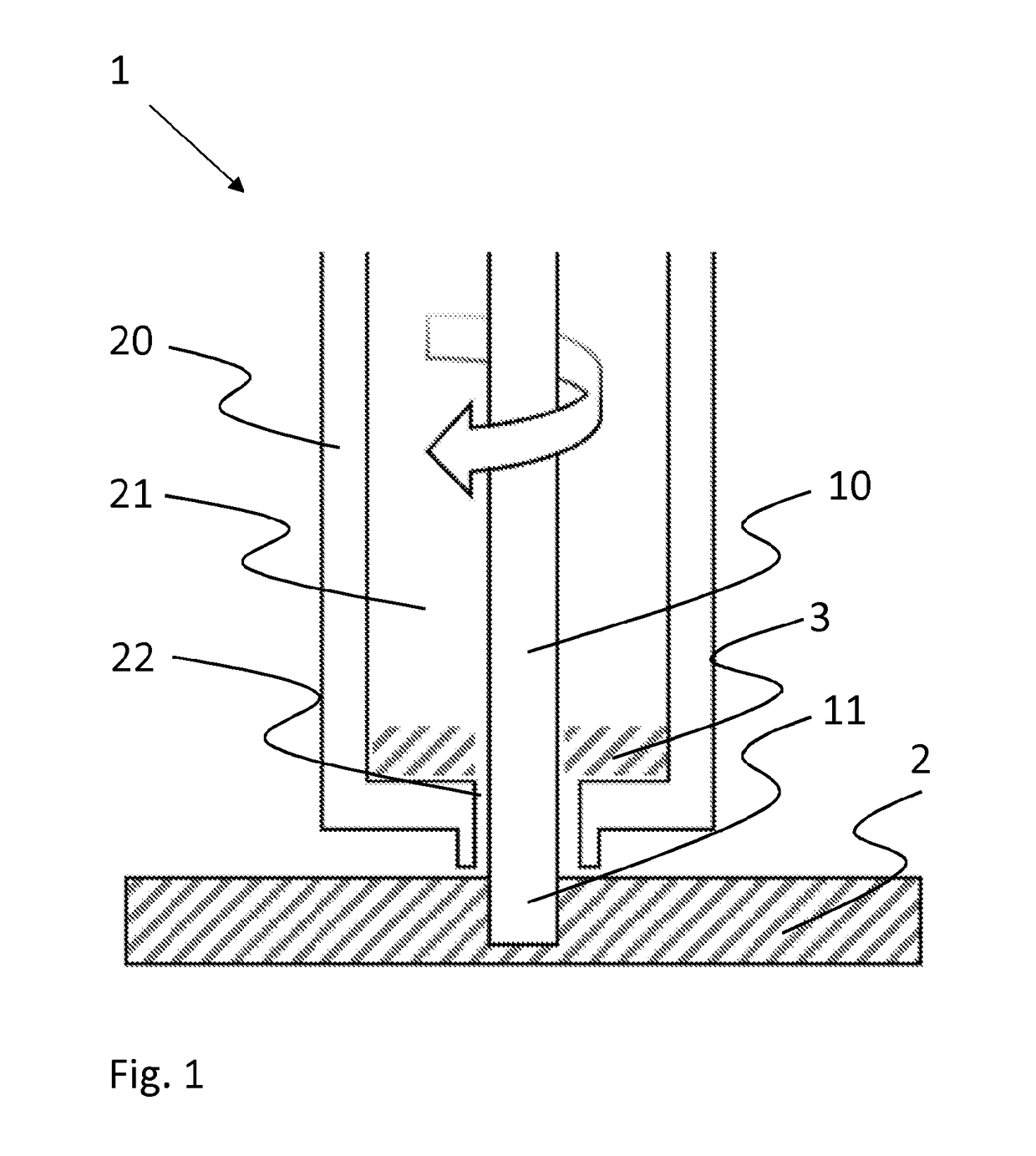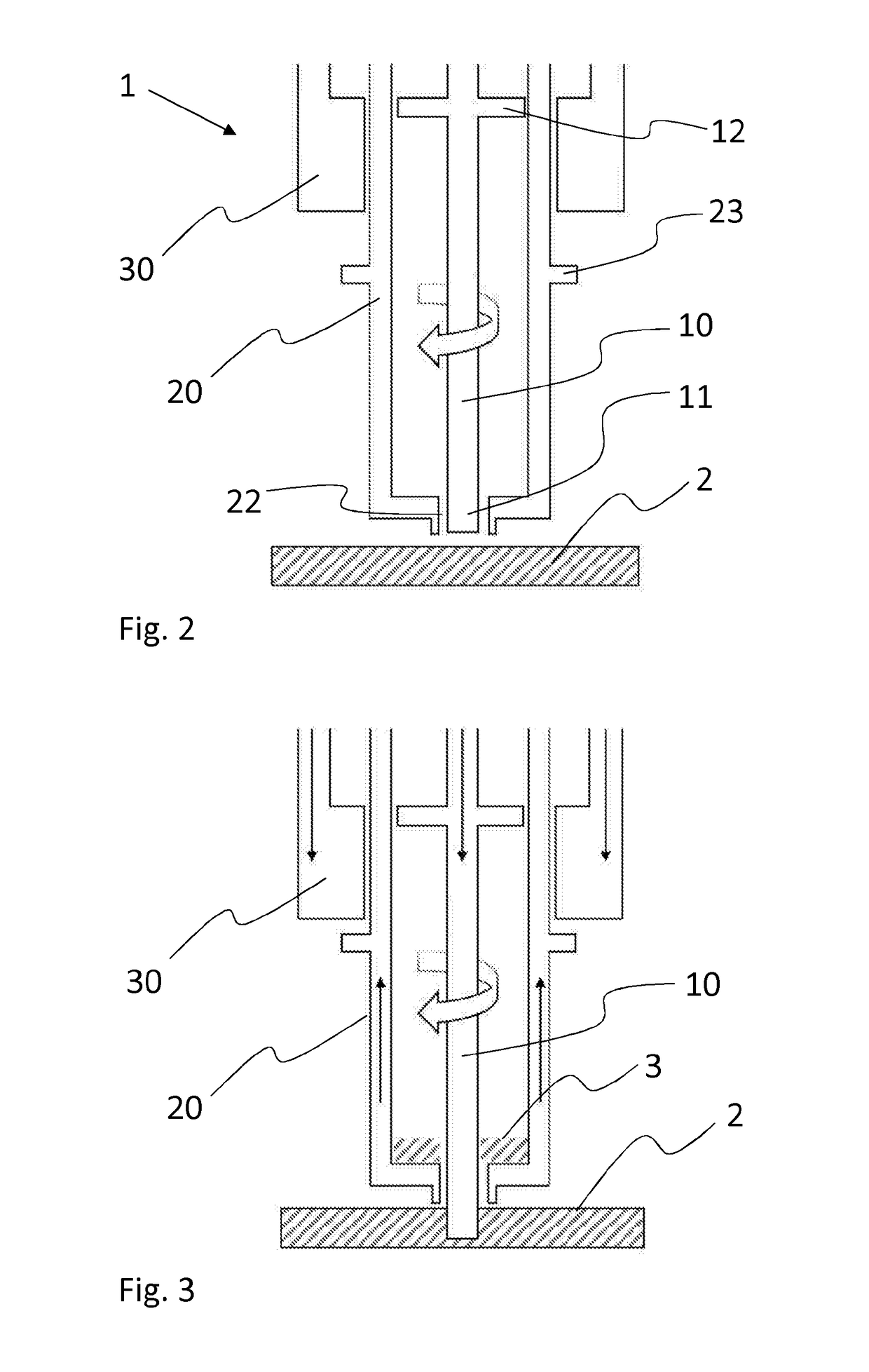Minimally invasive tissue harvesting device
a tissue harvesting device and minimally invasive technology, applied in the field of tissue transplantation, can solve the problems of small areas of sheet grafts lost after placement, skin tissue may be subject to many forms of damage, and expensive and complex cultivation procedures, so as to reduce the time taken and discomfort, less invasive
- Summary
- Abstract
- Description
- Claims
- Application Information
AI Technical Summary
Benefits of technology
Problems solved by technology
Method used
Image
Examples
Embodiment Construction
[0040]In the following, a detailed description of a tissue harvesting device according to the present invention is presented. In the drawing figures, like reference numerals designate identical or corresponding elements throughout the several figures. It will be appreciated that these figures are for illustration only and are not in any way restricting the scope of the invention.
[0041]In the context of the present invention, it is understood that the terms “distal” and “distally” refer to a position or direction (furthest) away from the operator when using the tissue harvesting device according to the present invention. Correspondingly, the terms “proximal” and “proximally” refer to a position or direction closest to or towards the operator when using the tissue harvesting device according to the present invention.
[0042]In FIG. 1, a schematic cross-sectional view of a tissue harvesting device 1 is shown. Here, only the distal portion intended to make contact with soft tissue is show...
PUM
 Login to View More
Login to View More Abstract
Description
Claims
Application Information
 Login to View More
Login to View More - R&D
- Intellectual Property
- Life Sciences
- Materials
- Tech Scout
- Unparalleled Data Quality
- Higher Quality Content
- 60% Fewer Hallucinations
Browse by: Latest US Patents, China's latest patents, Technical Efficacy Thesaurus, Application Domain, Technology Topic, Popular Technical Reports.
© 2025 PatSnap. All rights reserved.Legal|Privacy policy|Modern Slavery Act Transparency Statement|Sitemap|About US| Contact US: help@patsnap.com



